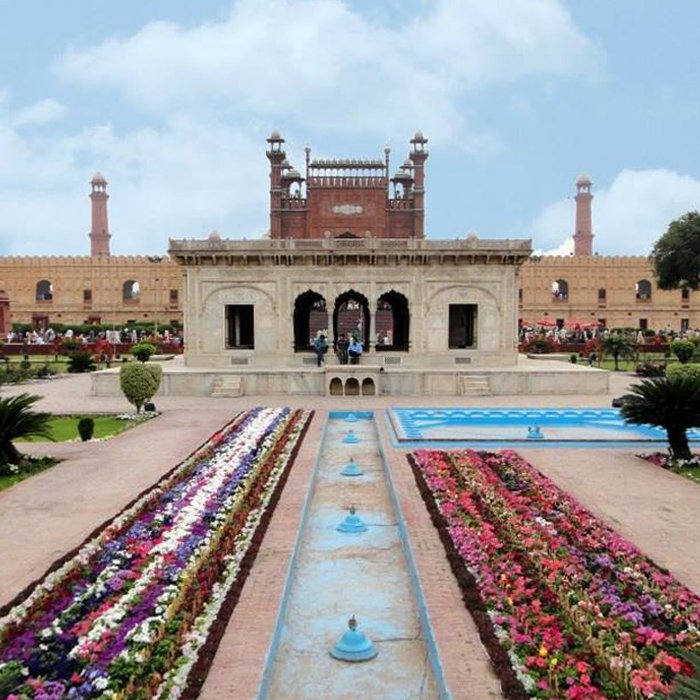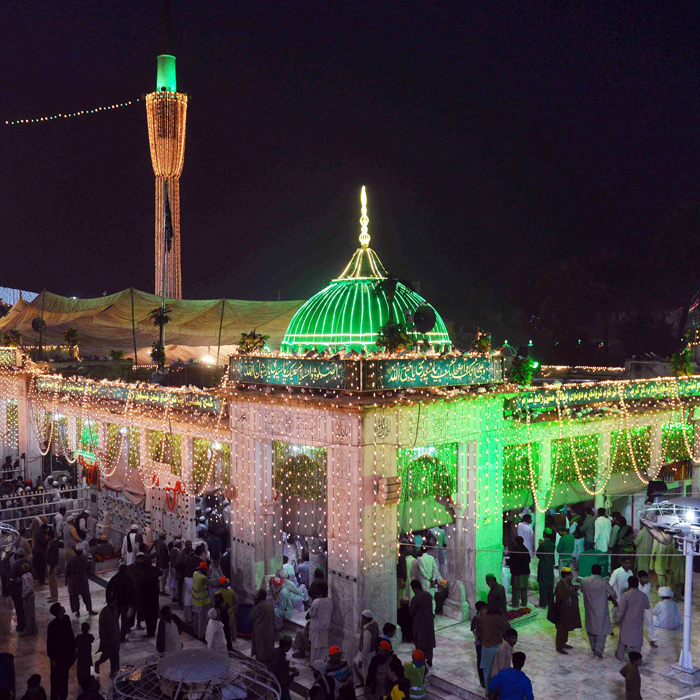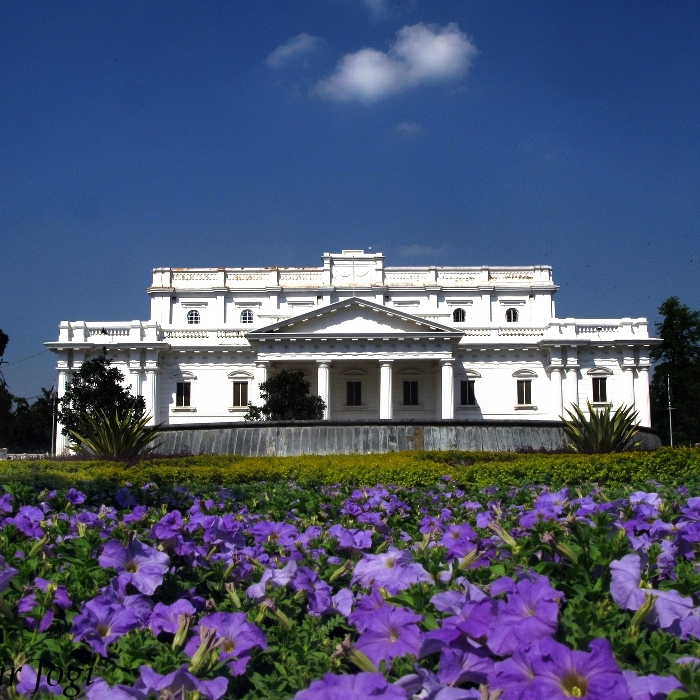Lahore is the capital city of the Pakistani province of Punjab. It is the second-most populous city in Pakistan after Karachi. The city is located in the northeastern end of Pakistan’s Punjab province, near the border with the Indian state of Punjab. Lahore is ranked as a beta-world city and is one of Pakistan’s wealthiest cities with an estimated GDP of $58.14 billion (PPP) as of 2014. Lahore is the historic cultural center of the Punjab region and is the largest Punjabi city in the world.
Lahore is one of Pakistan’s most liberal and cosmopolitan cities. It exerts a strong cultural influence over Pakistan. Lahore is a major center for Pakistan’s publishing industry and remains the foremost center of Pakistan’s literary scene. The city is also a major center of education in Pakistan. The population of Lahore is 11.13 Million. Lahore features a five-season semi-arid climate (Köppen climate classification BSh) (from another source: Composite monsoon climate) with five seasons: foggy winter (15 Nov – 15 Feb) with few western disturbances causing rain; pleasant spring (16 Feb – 15 April); summer (15 April – June) with dust, rain storms and heat wave periods; rainy monsoon (July – 16 September); and dry autumn (16 September –14 November). The hottest month is June, where average highs routinely exceed 40 °C (104.0 °F). The wettest month is July, with heavy rainfalls and evening thunderstorms with the possibility of cloudbursts. The coolest month is January with dense fog.
Badshahi Mosque


The Badshahi Mosque (Imperial Mosque) is a Mughal-era mosque in Lahore, the capital of the Pakistani province of Punjab. The mosque is located west of Lahore Fort along the outskirts of the Walled City of Lahore. The mosque is widely considered to be one of Lahore’s most iconic landmarks.
Badshahi Mosque was commissioned by Emperor Aurangzeb in 1671, with construction of the mosque lasting for two years until 1673. The mosque is an important example of Mughal architecture, with an exterior that is decorated with carved red sandstone with marble inlay. It remains the largest and most recent of the grand imperial mosques of the Mughal era and is the second-largest mosque in Pakistan. After the fall of the Mughal Empire, the mosque was used as a garrison by the Sikh Empire and the British Empire but is now one of Pakistan’s most iconic sights.
Shalimar Bagh


Sometimes spelled Shalimar Gardens, is a Mughal garden complex located in Lahore, capital of the Pakistani province of Punjab. Construction of the gardens began in 1637 C.E. during the reign of Emperor Shah Jahan and was completed in 1641.
The Shalimar Gardens were laid out as a Persian paradise garden. The gardens measure 658 meters by 258 meters and cover an area of 16 hectares east of Lahore’s Walled City. The gardens are enclosed by a brick wall that is famous for its intricate fretwork. In 1981 the Shalimar Gardens were inscribed as a UNESCO World Heritage Site as they embody Mughal garden design at the apogee of its development. The gardens date from the period when the Mughal Empire was at its artistic and aesthetic zenith.
Minar-e-Pakistan


Minar-e-Pakistan is a public monument located in Iqbal Park, adjacent to the Walled City of Lahore, in the Pakistani province of Punjab. The tower was constructed during the 1960s on the site where the All-India Muslim League passed the Lahore Resolution on 23 March 1940 – the first official call for a separate and independent homeland for the Muslims of British India, as espoused by the two-nation theory.
Lahore Fort


Lahore Fort was Built, damaged, demolished, rebuilt, and restored several times before being given its current form by Emperor Akbar in 1566 (when he made Lahore his capital), the Lahore Fort is the star attraction of the Old City. The fort was modified by Jehangir in 1618 and later damaged by the Sikhs and the British, although it has now been partially restored. Within it is a succession of stately palaces, halls, and gardens built by Mughal emperors Akbar, Jehangir, Shah Jahan, and Aurangzeb, comparable to and contemporary with the other great Mughal forts at Delhi and Agra in India. It’s believed that the site conceals some of Lahore’s most ancient remains.
The fort has an appealing ‘abandoned’ atmosphere (unless it’s packed with visitors) and although it’s not as elaborate as most of India’s premier forts, it’s still a fabulous place to simply wander around.
The fort is entered on its western side through the colossal Alamgiri Gate, built by Aurangzeb in 1674 as a private entrance to the royal quarters. It was large enough to allow several elephants carrying members of the royal household to enter at one time. The small Moti Masjid (Pearl Mosque) was built by Shah Jahan in 1644 for the private use of the ladies of the royal household and was restored to its original delicacy in 1904.
The Diwan-i-Aam (Hall of Public Audience) was built by Shah Jahan in 1631, with an upper balcony added by Akbar. It’s where the emperor would make a daily public appearance, receive official visitors, and review parades.
Khawabgarh-i-Jehangir (Jehangir’s Sleeping Quarters), a pavilion on the north side of his quadrangle, now houses a small museum of Mughal antiquities. One charming story about Jehangir is that he had a chain suspended outside the fort, which anyone unable to obtain justice through the usual channels could pull. A bell would ring in his private chambers and the petition would receive his attention.
Moving west, another graceful pavilion, the Diwan-i-Khas (Hall of Private Audience), was built by Shah Jahan for receiving guests.
The Shish Mahal (Palace of Mirrors), built by Shah Jahan in 1631, was closed for renovation at the time of research but should be open by the time you read this. Decorated with glass mirrors set into the stucco interior, it was built for the empress and her court and installed with screens to conceal them from prying eyes. The walls were rebuilt in the Sikh period, but the original marble tracery screens and pietra dura (inlay work) are in remarkable condition. The view from here over the rest of the fort and Badshahi Mosque is rewarding.
Naulakha is the marble pavilion on the west side of the quadrangle, lavishly decorated with pietra dura – studded with tiny jewels in intricate floral motifs. It was erected in 1631 and its name, meaning nine lakh (900,000), refers either to the price to build it or the number of semiprecious stones used in its construction.
You can exit the fort from here, down the Hathi Paer (Elephant Path) and through Shah Burj Gate; if you do, look behind to see the finely painted tilework of the outer wall.
There are three small museums on site (photography prohibited): the Armoury Gallery exhibits various arms including pistols, swords, daggers, spears, and arrows; the Sikh Gallery predominantly houses rare oil paintings; and the Mughal Gallery includes among its exhibits old manuscripts, calligraphy, coins and miniature paintings, as well as an ivory miniature model of India’s Taj Mahal.
To better understand the fort’s history you can hire a guide for Rs 150. In addition, Lahore Fort, Pakistan’s Glorious Heritage, a color booklet by Muhammad Ilyas Bhatti, sells here for Rs 150.
Shrine Of Data Ganj Bakhsh Hajveri


Author of a famous book on mysticism, the 11th-century Data Ganj Bakhsh, originally from Ghazni in Afghanistan, was one of the most successful Sufi preachers on the subcontinent and is today one of the most notable Sufi saints in Pakistan. The Shrine of Data Ganj Bakhsh Hajveri is located west of Bhatti Gate, just o Born Abdul Hasan Ali, he was known as Data Ganj Bakhsh (the Bestower of Treasures) because of his generosity towards the less privileged. A hospital and several institutions for the needy have been added near the shrine over the years. Hordes of devotees gather here on Thursday afternoons to listen to the excellent qawwali.
The urs (death anniversary) of Data Ganj Bakhsh Hajveri is held at this shrine on 18-20 Safar (March/April) and is attended by tens (if not hundreds) of thousands of pilgrims. outside the Old City.
Bagh-E- Jinnah


A central place to slow the pace and chat with locals is pleasant Bagh-i-Jinnah. There’s an open-air theatre that has frequent nightly performances (in Urdu or Punjabi) and the attractive British building in the center of the park now houses Jinnah Library.
Lahore Zoo


Near Bagh-i-Jinnah, behind a large gateway adorned with a colorful animal mural, Lahore Zoo is one of the oldest zoos on the subcontinent. It was founded in 1872 and includes a variety of bird species along with lions, elephants, monkeys, leopards, giraffes, tigers, and more. The gardens themselves are of almost as much interest as the animals and contain a wide range of plants and trees, some believed to date back to the 16th century.
